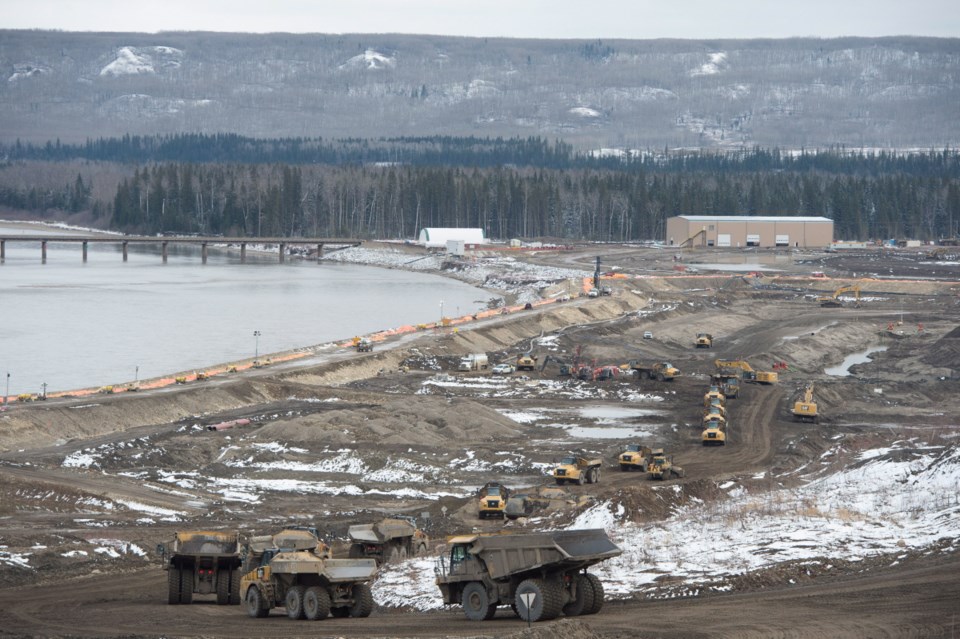Re: “Comment: B.C. Hydro’s fixation with dams could cost us,” comment, Sept. 30.
The commentary about Site C deserves an immediate rebuttal. Unfortunately, it perpetuates the mythology of critics about massive environmental impact of the project that are simply not true. Your readers deserve to know the facts about the land-use impacts of this project.
I am a former resident of the Peace area and know the “on the ground” situation first-hand. I have even celebrated with a beer or two at a “corn roast” in the valley bottom. But the alarmist view that family farms are being displaced and future food production at risk by the project is simply an over-exaggeration of the worst sort.
I am infuriated the media continually choose to show photos of idyllic farm sites to give the impression this is typical of the Peace River valley but neglect to tell you that this is almost the only flat benchland along the entire 80-kilometre length of river. Critics use this photo to speak about the loss of rural lifestyle and dire consequences of impact on agriculture. Most of this might be nostalgic but it is mainly nonsense.
The reservoir will have surface area of 9,200 hectares which is only double the size of the existing river. Do the math. How can it then flood 13,000 hectares of farmland as has been claimed? And if the actual surface area being flooded is that much smaller, then claims about massive loss of wildlife habitat are equally overstated.
Anybody who has seen the Peace River country realizes the river valley itself is relatively narrow, confined inside steep slopes with few terraces or benches. Unlike other rivers such as the lower Fraser Valley, there is no wide floodplain or series of terraces to be inundated when a river floods its bank or to be buried under a reservoir.
Building the Site C dam does not create a huge new reservoir, but simply raises the water level much as in your bathtub; in other words, the river is deeper but not much wider.
As such, the loss of valley bottom land with agricultural capability is closer to 3,800 ha, of which only 1,600 ha has actual potential. I would also point out that little of the land — less than 400 ha being flooded — was actually being cropped, and then mainly for forage, not food crops.
While it is true the first W.A.C. Bennett Dam and the Williston reservoir project constructed almost 50 years ago had significant upstream and downstream impacts, this proposed “run of the river” project to build a third dam simply reuses water impounded behind two others and has moderate impacts. To produce power for about 450,000 homes is an opportunity with not unreasonable impacts.
The claim the farmland lost will feed a million people is pure hokum. In contrast, the vast rolling farmland of the Peace River region surrounding the river valley does have significant unrealized potential for food crops, recognizing the limitations of a short growing season. Admittedly, a portion of lost arable land is Class 1 suitable for market gardens, but this is hardly a major issue in the Peace region, with over 485,000 ha of Class 1-3 lands.
Most countries in the world are in envy of an opportunity for a major hydro project with such minimal environmental impacts. I fully recognize that in the past B.C. has suffered large hydro projects with massive reservoirs on the Columbia and Nechako rivers. However, Site C suffers none of the drastic impacts seen at Aswan or Three Gorges.
We can have vigorous debate about merits of energy projects, but let us do so on the basis of understanding the facts, not misleading headlines.
Hydro power is clean energy and renewable. Always there when we need it — no need to burn coal or hydrocarbons.
I have no quarrel with those who debate the economic and social costs of the Site C project in terms of alternative supply and demand for electricity, but arguing against it on basis of major negative environmental impacts is fallacious. We trust the Times Colonist to lead the way in having informed discussion instead of simply repeating the exaggerated claim of zealous critics who oppose the project for political reasons.
James D. Anderson was director of farmland resources for the Ministry of Agriculture, Forests and Fisheries from 1980 to 1985 and involved in the first environmental review and agricultural assessment done of Site C in 1982.



